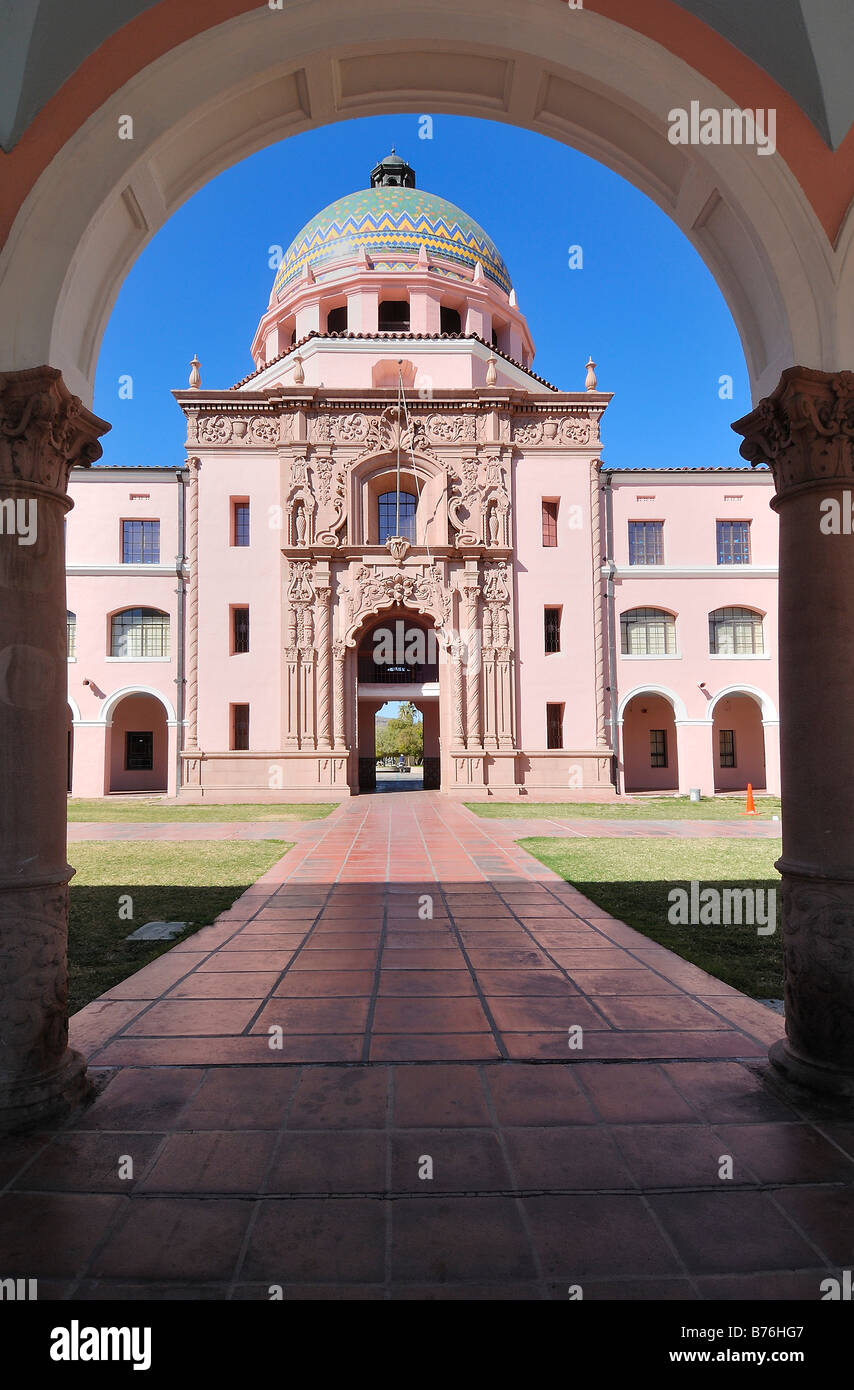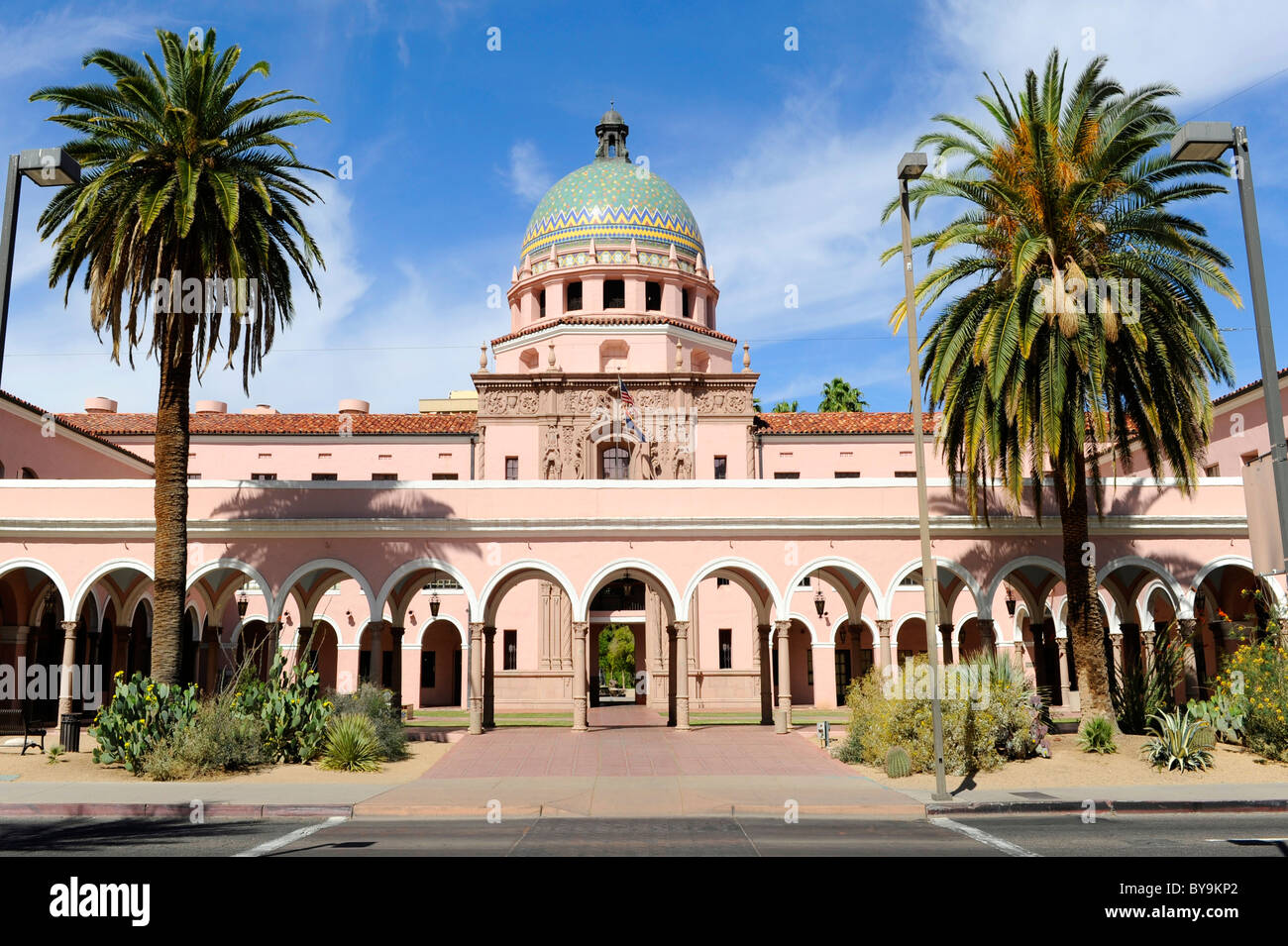
The Enduring Walls: Tucson’s Presidio and the Crucible of the Old Pueblo
Beneath the bustling, sun-drenched streets of modern Tucson, Arizona, lies a secret, a testament to its very genesis. It’s not buried treasure or an ancient ruin in the traditional sense, but the ghost of a fort, a Spanish outpost that forged a city from the harsh Sonoran Desert. The Presidio San Agustín del Tucson, established in 1775, is more than just a historical site; it is the beating heart of the "Old Pueblo," a living chronicle of conflict, cultural convergence, and extraordinary resilience.
To walk the reconstructed grounds of the Presidio today is to step back into a tumultuous era when empires clashed, native peoples defended their ancestral lands, and a new civilization struggled to take root. It’s a sensory journey: the scent of adobe and creosote, the feel of sun-baked earth underfoot, the imagined cries of soldiers and the distant rumble of Apache hooves. This isn’t merely a tourist attraction; it’s a vital key to understanding not just Tucson, but the complex, multicultural tapestry of the American Southwest.
The Spark in the Desert: Establishing a Frontier Outpost

The story of the Presidio begins not in Arizona, but in the grand halls of the Spanish Empire. By the mid-18th century, Spain’s vast North American territories, stretching from California to Texas, were under constant threat. Indigenous groups, particularly the fierce Apache, resisted Spanish encroachment, raiding settlements and missions with devastating effectiveness. To secure this remote frontier, the Crown initiated a new defensive strategy: a chain of presidios – fortified military outposts – positioned at strategic intervals.
Enter Hugo O’Conor, an Irish mercenary in Spanish service, known as "The Red Captain" for his ruddy complexion and formidable military prowess. Tasked with reorganizing the northern frontier’s defenses, O’Conor meticulously surveyed the landscape. In August 1775, he identified a promising site on the west bank of the Santa Cruz River, a life-giving ribbon of water in the arid desert, an area long inhabited by the Sobaipuri O’odham people. This location offered a reliable water source, fertile ground for agriculture, and a strategic vantage point. On August 20, 1775, O’Conor formally established the Presidio San Agustín del Tucson, named for Saint Augustine, a patron saint of the Spanish military. This date marks, in essence, Tucson’s birth certificate.
The initial Presidio was a rudimentary affair: a stockade of logs, with temporary structures inside. But over the next few years, it grew into a formidable adobe fortress. Its walls, made from sun-dried mud bricks, rose to an impressive height of 12-14 feet and were 3-4 feet thick, forming a square enclosing approximately 2.5 acres. Inside were barracks, a chapel, a commandant’s house, a granary, and other essential buildings. A force of about 50-75 Spanish soldiers, often augmented by allied Pima (O’odham) scouts, garrisoned the fort. Their primary mission: to protect Spanish settlers, missionaries, and the crucial trade routes from Apache raids.
Life Inside the Walls: A Microcosm of Frontier Existence
Life within the Presidio walls was a harsh blend of military discipline and frontier survival. Soldiers, many of whom were of mixed Spanish and Indigenous heritage (mestizos), endured scorching summers and surprisingly cold winters. Their days were filled with patrols, guard duty, and the constant readiness for an Apache attack. But the Presidio was more than just a military base; it was a nascent community. Soldiers brought their families, and a small civilian population – artisans, merchants, and farmers – gradually grew within and just outside its protective embrace.
The Sobaipuri O’odham, who had long cultivated the fertile lands along the Santa Cruz River, played a complex and crucial role. While some were displaced by the Presidio’s construction, others became vital allies to the Spanish, offering their intimate knowledge of the desert terrain and serving as scouts and auxiliaries against their common enemy, the Apache. This early interaction between Spanish and Indigenous cultures laid the foundation for Tucson’s unique demographic and cultural blend.
"The Presidio wasn’t just a fort; it was the very crucible where the diverse elements of Tucson’s future identity were first forged," explains Dr. John G. Glick, a historian specializing in the Spanish colonial period. "It was a place of conflict, certainly, but also of surprising collaboration and cultural exchange, driven by the shared imperative of survival in a beautiful yet unforgiving land."
The constant threat of Apache raids shaped every aspect of life. Farmers tilled their fields under armed guard, and travel outside the walls was perilous. Despite the dangers, the Presidio endured. It became a lonely sentinel, a beacon of Spanish power and presence in the vast, contested northern frontier of New Spain.

From Spanish to Mexican Rule: A Fading Glory
The early 19th century brought dramatic change to New Spain. The Mexican War of Independence, erupting in 1810, slowly but inexorably loosened Spain’s grip on its vast colonial empire. By 1821, Mexico had achieved independence, and the Presidio San Agustín del Tucson, along with all of New Spain’s northern territories, became part of the new Mexican Republic.
For the soldiers and residents of Tucson, however, the change in sovereignty brought little immediate relief or prosperity. The new Mexican government, plagued by internal strife and a struggling economy, had fewer resources to dedicate to its distant northern frontier. Presidio garrisons dwindled, supplies became scarce, and the crucial payment of soldiers often fell into arrears.
The Apache threat, far from diminishing, intensified. Without the consistent resources of the Spanish Crown, the Mexican presidios struggled to maintain effective defense. The walls of the Presidio San Agustín del Tucson, though still standing, became less formidable. The community outside the walls grew, but the fort itself began a slow, inevitable decline as a purely military institution. It transitioned, de facto, into a civilian town that happened to have a fort at its heart.
The American Era: Walls Come Down, A City Rises
The next major shift came in 1854 with the Gadsden Purchase. For $10 million, the United States acquired a vast tract of land from Mexico, including what is now southern Arizona and New Mexico. Suddenly, Tucson, along with its aging Presidio, became part of the United States.
The arrival of American settlers and the establishment of a new territorial government brought an end to the Presidio’s military role. Its adobe walls, once vital for protection, were now seen as obstacles to progress and sources of readily available building materials. Over time, the Presidio’s sturdy walls were systematically dismantled, brick by precious adobe brick, to construct new homes, businesses, and civic buildings in the burgeoning American town. The parade ground became a public plaza, the commandant’s house gave way to a saloon, and the Presidio’s physical footprint was gradually absorbed into the fabric of the growing city.
By the late 19th century, little visible evidence of the original Presidio remained above ground. Yet, its legacy endured. The town that grew out of its protective embrace became known affectionately as "The Old Pueblo," a direct nod to its origins as a fortified Spanish-Mexican settlement. The street grid of downtown Tucson, even today, subtly reflects the original layout of the Presidio and the surrounding community.
Rebirth: The Presidio San Agustín del Tucson Museum
For decades, the Presidio’s memory lay largely dormant, a historical footnote for many. But in the late 20th century, a renewed appreciation for Tucson’s unique heritage sparked a remarkable effort to bring its origins back to life. Fueled by archaeological discoveries and the tireless work of dedicated historians and community leaders, the Presidio San Agustín del Tucson Museum was established.
The museum’s mission is ambitious: to reconstruct a portion of the original Presidio on its actual footprint, creating an immersive, educational experience that allows visitors to literally walk through history. Extensive archaeological digs, which unearthed foundations, artifacts, and even the remains of the original adobe walls, provided the blueprint for this painstaking reconstruction.
"The archaeological work was crucial," says a representative from the Presidio Museum. "It confirmed the exact location of the walls, the buildings inside, and provided countless details about daily life – from pottery fragments to military buttons. We are building this based on solid evidence, not just speculation."
Today, visitors can explore the reconstructed section of the Presidio, including portions of the adobe wall, the Sonoran Row House (representing early civilian dwellings), and interpretive exhibits. The museum regularly hosts living history events, with costumed re-enactors portraying Spanish soldiers, settlers, and Native American allies, offering vivid glimpses into the past. You might encounter a soldier demonstrating musket firing, a woman preparing traditional foods, or a craftsman practicing an ancient trade. These interactive experiences are designed to make history tangible and relatable, breathing life into the sun-baked bricks and dusty ground.
The Enduring Legacy: More Than Just Walls
The Presidio San Agustín del Tucson is more than a historical curiosity; it is a profound symbol of Tucson’s identity. It represents the earliest layer of a complex cultural stratigraphy that includes the ancient Indigenous presence, the Spanish colonial influence, the Mexican heritage, and finally, the American frontier spirit.
Its story is one of perseverance against immense odds: the relentless desert, the formidable Apache, and the vast distances that separated it from the centers of power. It’s a testament to human ingenuity and adaptability, as settlers learned to thrive in an environment that demanded both toughness and respect.
Moreover, the Presidio serves as a vital educational tool, challenging simplistic narratives of American history. It reminds us that the Southwest was once the northern frontier of a vast Spanish empire, a place where European and Indigenous cultures met, clashed, and merged long before the United States extended its reach. It highlights the often-overlooked contributions of Spanish-speaking peoples and Native Americans to the region’s development.
In a city that prides itself on its unique blend of cultures and its deep historical roots, the Presidio San Agustín del Tucson stands as a powerful, tangible link to its very beginning. It’s a place where the past isn’t just remembered; it’s re-experienced, offering a profound understanding of how a remote military outpost transformed into the vibrant, multicultural metropolis we know today as the Old Pueblo. As the sun sets over its reconstructed adobe walls, casting long shadows across the desert floor, one can almost hear the echoes of 1775, a reminder that every city has a story, and Tucson’s began right here, within these enduring walls.


